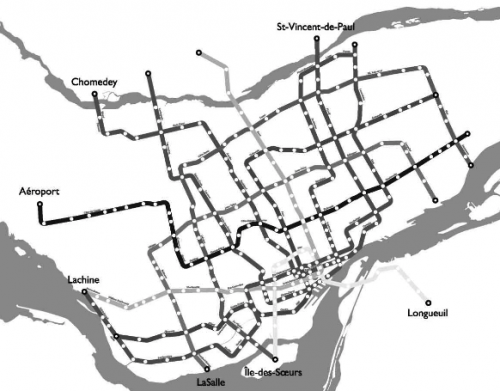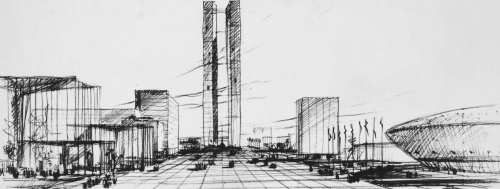
Ah, what could have been.
Montreal has gone through a tremendous evolution since the 1950s. However, the city could have looked vastly different had city leaders of the time executed their plans for Montreal in the year 2000.
The website, Nouveau Projet, has uncovered plans of what Montreal was supposed to look like at the turn of the century. The findings were collected from Montreal’s Collection Canadian Centre for Architecture and the Bibliothèque municipale de Montréal.
Montreal’s city officials in the 50s had anticipated the population would grow to have “millions of inhabitants” and their goal was to rank Montreal among the world’s greatest cities.
Here are some highlights from Montreal: The City That Could Have Been.
A 300-station metro line

Montreal: The City That Could Have Been (citiesforpeople.ca)
It was believed that Montreal would reach seven million inhabitants by the year 2000. To make travel easier within the city, a metro network comprising of nine lines and roughly 300 stations was designed. It would have reached as far as the airport, the South Shore, Nun’s Island and what is now Montreal North.
A campus on Le Plateau
To carry out a plan for a new university in the east-end, modelled after British and American universities, the city would have had to completely demolish all buildings located between Rachel Street, Pine Avenue, Saint Laurent Boulevard and Parc La Fontaine Avenue. La Fontaine Park and Mont Royal Park would have been connected with a huge concrete platform and Saint Denis Street would have been turned into a tunnel.
The massive and destructive project was replaced by today’s UQAM campus.
St-Laurent Highway

Montreal: The City That Could Have Been (citiesforpeople.ca)
The Metropolitan Highway came close to having a twin, an elevated highway running adjacent to Saint Laurent Boulevard.
Downtown’s Little Brasília
Intended to cover all train tracks between Central Station and the Old Port, the new capital of Brazil, Brasília, was supposed to have its own representation in Montreal. Little Brasília would have included a huge auditorium and office buildings.
The McGill Ghetto’s business district

Montreal: The City That Could Have Been (citiesforpeople.ca)
La Cité-Concordia was a redevelopment project planned for a large area east of McGill University. Numerous residences would have been demolished and replaced with eight towers and many other modern buildings of the time. Due to major protests against this project, “only” 25 Victorian residences were torn down and a less aggressive version of the project—La Cité—was constructed.
Mont-Royal’s Tower

Montreal: The City That Could Have Been (citiesforpeople.ca)
Former mayor Jean Drapeau wanted to build a tower atop Mont Royal. Drapeau wanted to the tower to be considered one of the Wonders of the World and would be used as a meeting point for tourists from all over the globe.
Imagine what future-Montreal in the year 2080 will be talking about what the city did in 2018? Here’s hoping our construction is done by then.
See also


